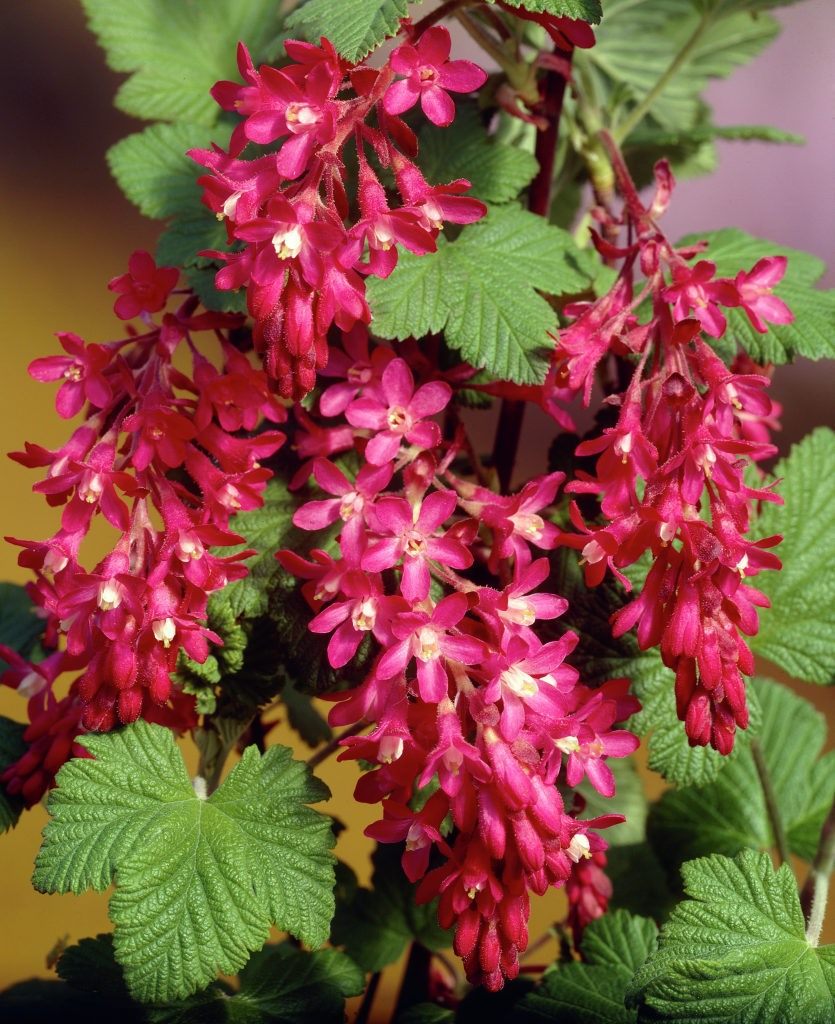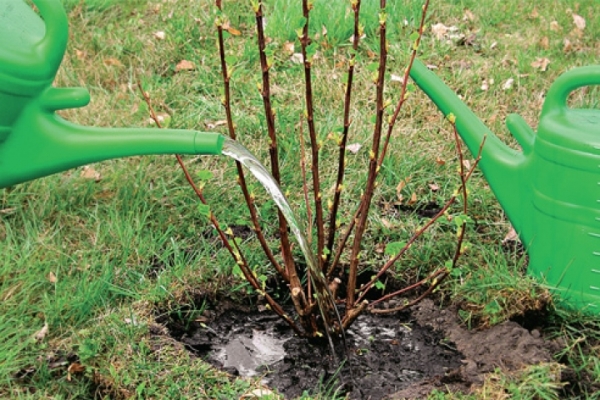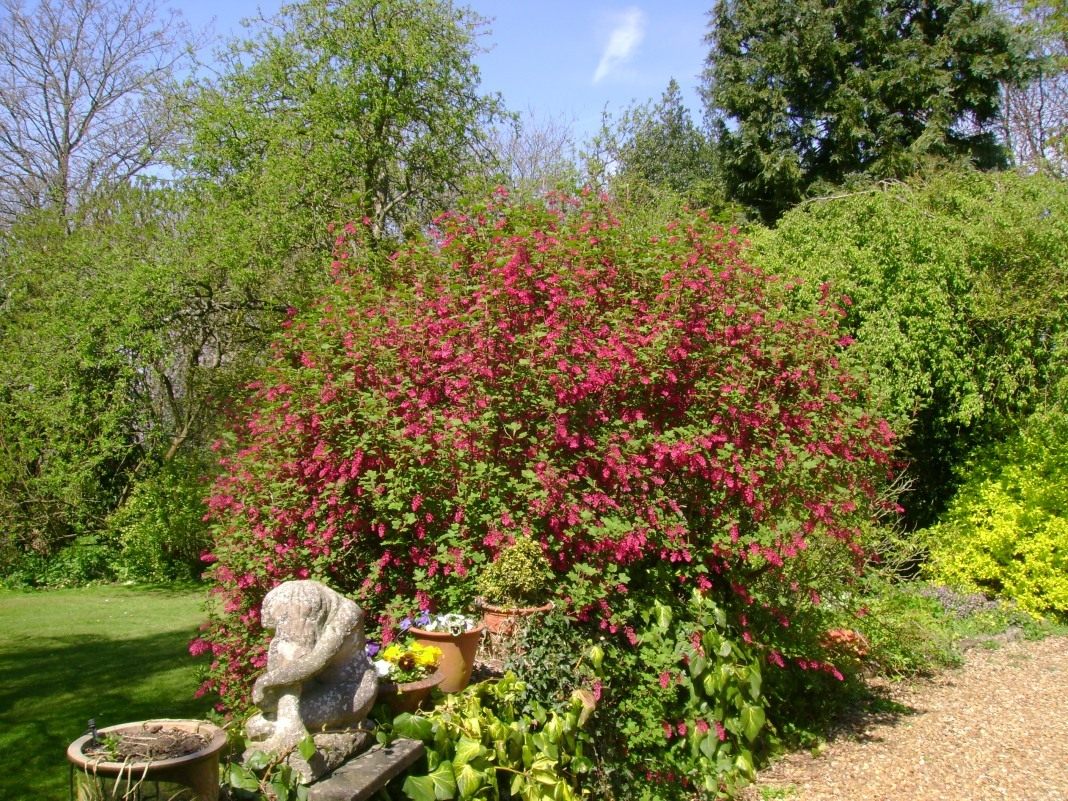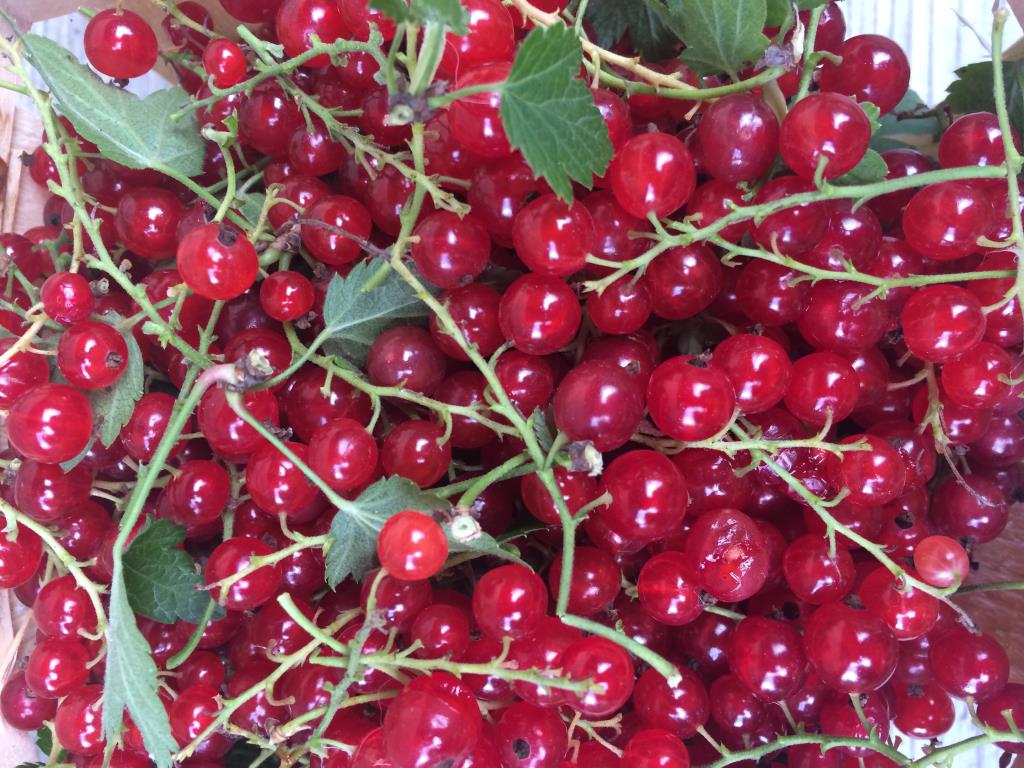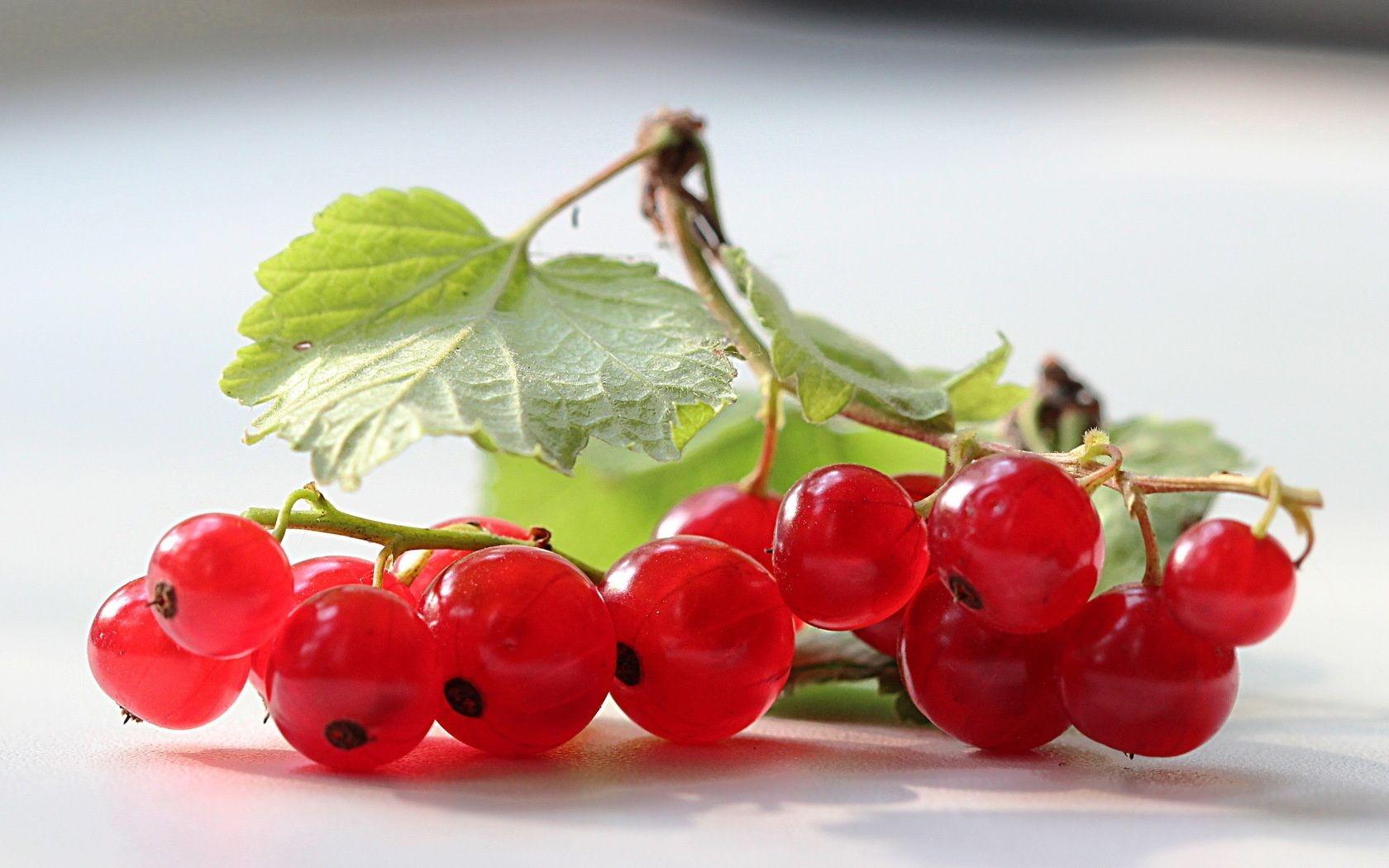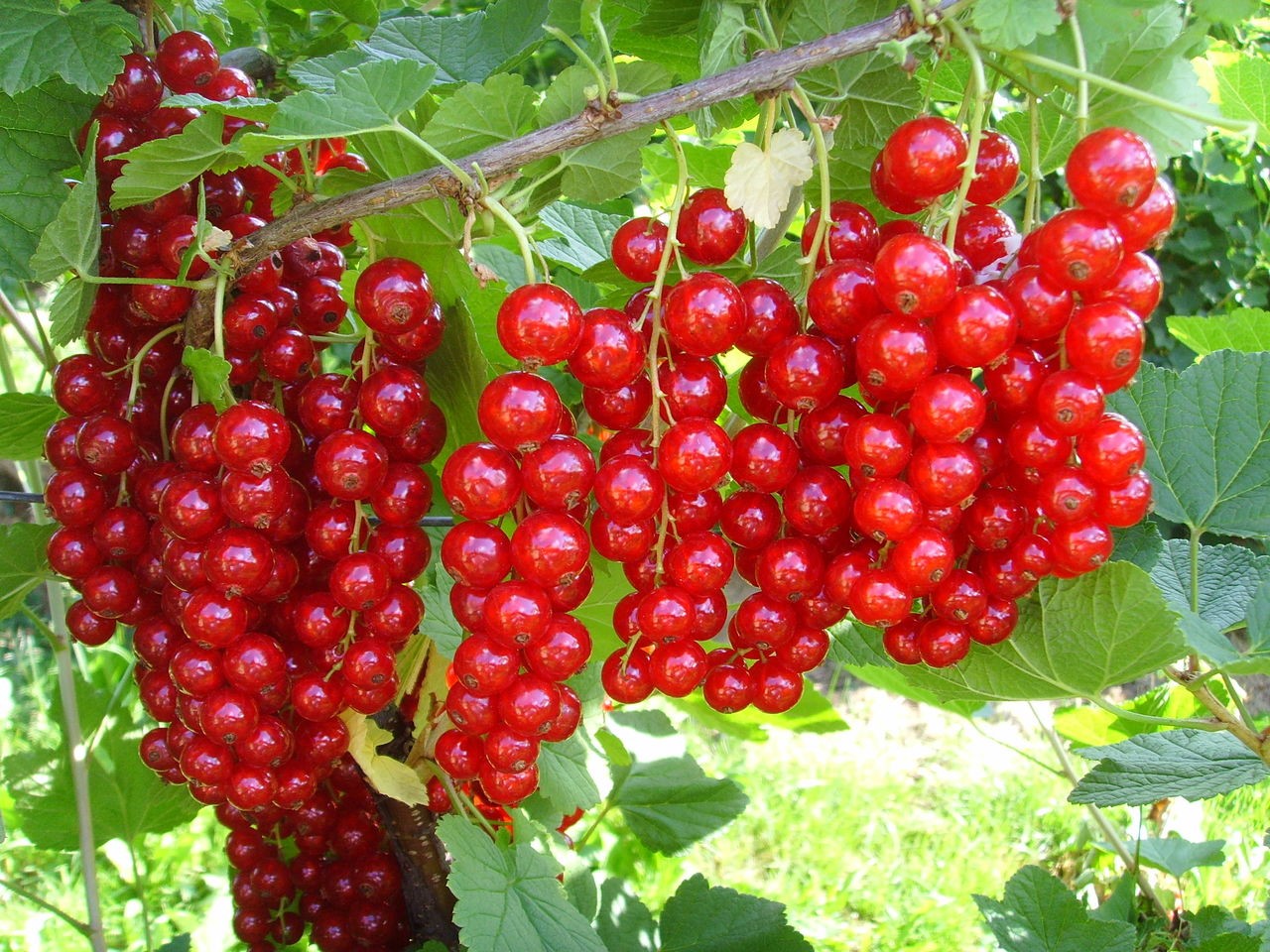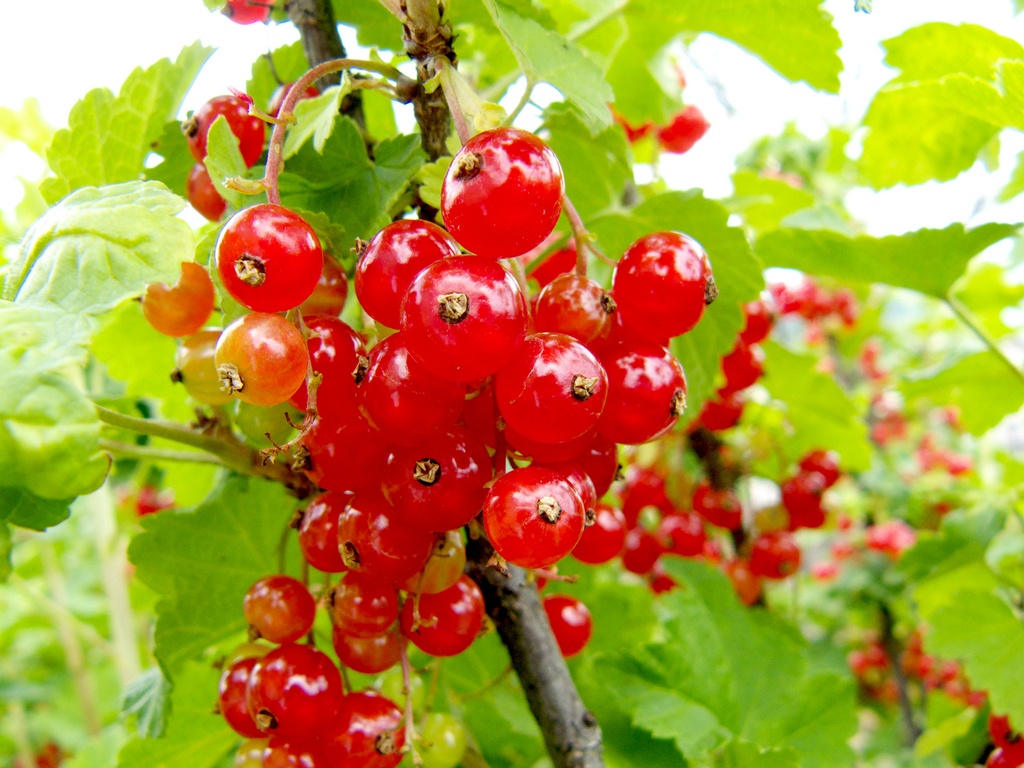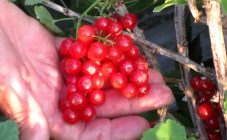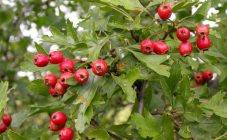Content:
Everyone knows that currant is a widespread berry shrub, a habitual inhabitant of summer cottages. But few people know that, in addition to black and red varieties, there are also decorative species of this plant. The most spectacular of them is the blood-red currant, distinguished by its magnificent flowering. This is a rather unpretentious shrub, the cultivation of which in the middle lane is difficult only because of its tendency to freeze out.
Currant characteristic
Like ordinary berry varieties, bloody currants belong to the Gooseberry family. Under natural conditions, it grows in the west of North America. There it can be found on the rocky areas of the Pacific coast. Cultivated species are common all over the world. They are highly regarded for their luxurious clusters of flowers, which have been compared to rhododendrons.
Ornamental red currant is a shrub with a spreading crown and straight, brown-red branches. In habitats, it grows up to 4 m, in the climate of the middle zone and to the north - from 1 to 2.5 m. It has large leaves with 3-5 lobes, the size of leaf plates reaches 8 cm. Currant bushes are distinguished by various shades of foliage. This gives them a special decorative effect, which lasts until late autumn. The color of the leaves depends on the variety and varies from yellow to light green. On the underside, they are white felt. Young leaves smell very nice.
Decorative currants begin to bloom in the third year of life. It blooms in May and blooms for over 3 weeks. She has tubular flowers, collected in large clusters. The color of the petals ranges from pale pink to bright red, and in the center the flower is pure white or with yellow dots. King Edward VII is considered the best variety of blood red currant. This is a plant with long, bright burgundy inflorescences, each of which contains several dozen flowers.
Fruiting of currants begins from the fifth year of life. Fruits appear in August. They are also very decorative: black with a bluish bloom, up to 1 cm in diameter. The berries are edible, but much inferior to fruit species, as they have a bland taste.
Planting and caring for shrubs
Currants prefer moist, fertile soils with good drainage. It is better if their reaction is acidic or neutral.
You can plant a plant both in early spring and in autumn. In regions with frosty winters, it is better to do this in the spring. The seedling hole should be 2 times the diameter of its root. Mineral or organic fertilizers are preliminarily introduced into it. The seedlings are buried 5-10 cm, their branches are not cut off. Immediately water the bushes and mulch the soil around them.
Caring for the Blood Red King Edward vii is easy. The following technical activities are carried out during the season:
- In dry summers, plants are watered. This is especially important during flowering and fruit setting;
- If you maintain a layer of mulch around the bushes, then you do not need to loosen and weed them. If there is no mulch, then 1-2 weeding and loosening are carried out per season;
- Top dressing is not done until 3 years.Starting from the age of 3 (or if the soil is depleted), one top dressing is performed per season. To do this, mineral fertilizers or organic matter are applied to the soil in early spring.
Pruning a plant is quite time consuming. It is done every 3 years, while removing weak and internal shoots, which thicken the crown. 5-6 year old branches are cut at the root. Young branches can be pruned by a third to improve branching and stimulate vigorous growth. This pruning helps to shape the shrub and regulate its development.
Shelter for the winter
Low winter hardiness is a significant drawback of King Edward VII currants. When grown in temperate to cold climates, it should be covered for the winter. Shelter is produced as follows:
- after dropping the leaves, the topsoil is removed and the lower part of the shrub is spud;
- branches are bent to the soil and covered with dry foliage;
- if a lot of snow falls in winter, then you need to additionally cover the bush with it;
- if the winter has little snow, then the bushes are either covered with spruce branches, or the layer of leaves is increased, or wrapped in nonwoven material.
Shrub propagation
The blood red royal currant bush is propagated by cuttings, layering or seeds. The easiest way is to grow young plants in the first way - from cuttings. For this, shoots cut in the summer with a length of 25 cm are planted in containers with moist soil. A transparent mini-greenhouse is being erected above them. With this method, up to 90% of the cuttings are rooted. In autumn, semi-lignified shoots can be planted directly into the soil.
Bloody currants can be propagated by seed. This is a rather laborious method that is used when it is not possible to purchase cuttings or ready-made seedlings. Before planting in the ground, it is necessary to carry out stratification for two to three months. Of all the seeds planted, only one third germinates. Seeds can also be planted before winter in containers or directly into the soil. In this case, in the spring, young shoots must be especially carefully looked after.
Use in landscape design
Ornamental currant bushes are widely used to decorate lawns, parks and gardens. They are used as:
- tapeworms on lawns with ground cover and flowering plants;
- original hedge;
- in groups with other trees and shrubs, the flowering time of which coincides with the flowering of currants.
The plant is often grown in the form of a stem grafted onto a golden currant bush. The reddish currant bush looks great next to forsythia, which blooms with yellow flowers. Good neighbors for him will be bulbous plants, perennials that bloom in spring, as well as irga and viburnum. The composition will be decorated with daffodils, forget-me-nots and tulips.
Advantages and disadvantages of the variety
Blood-red currant King Edward 7 is an undemanding plant. It has the following advantages:
- grows well in sunny areas, but can grow in partial shade;
- drought resistant;
- it is easy to look after her.
The disadvantages include the low frost resistance of the shrub. Without protection, parts of the bushes that are above the snow level freeze out. In severe winters, flower buds can also freeze.
Blood-red currant bushes are unpretentious and disease-resistant. They bloom in May and delight the eye with lush bloom for a month.In June, beautiful berries of an unusual appearance appear on them. These plants retain their decorative appearance until late autumn and remain a wonderful decoration of the garden.
